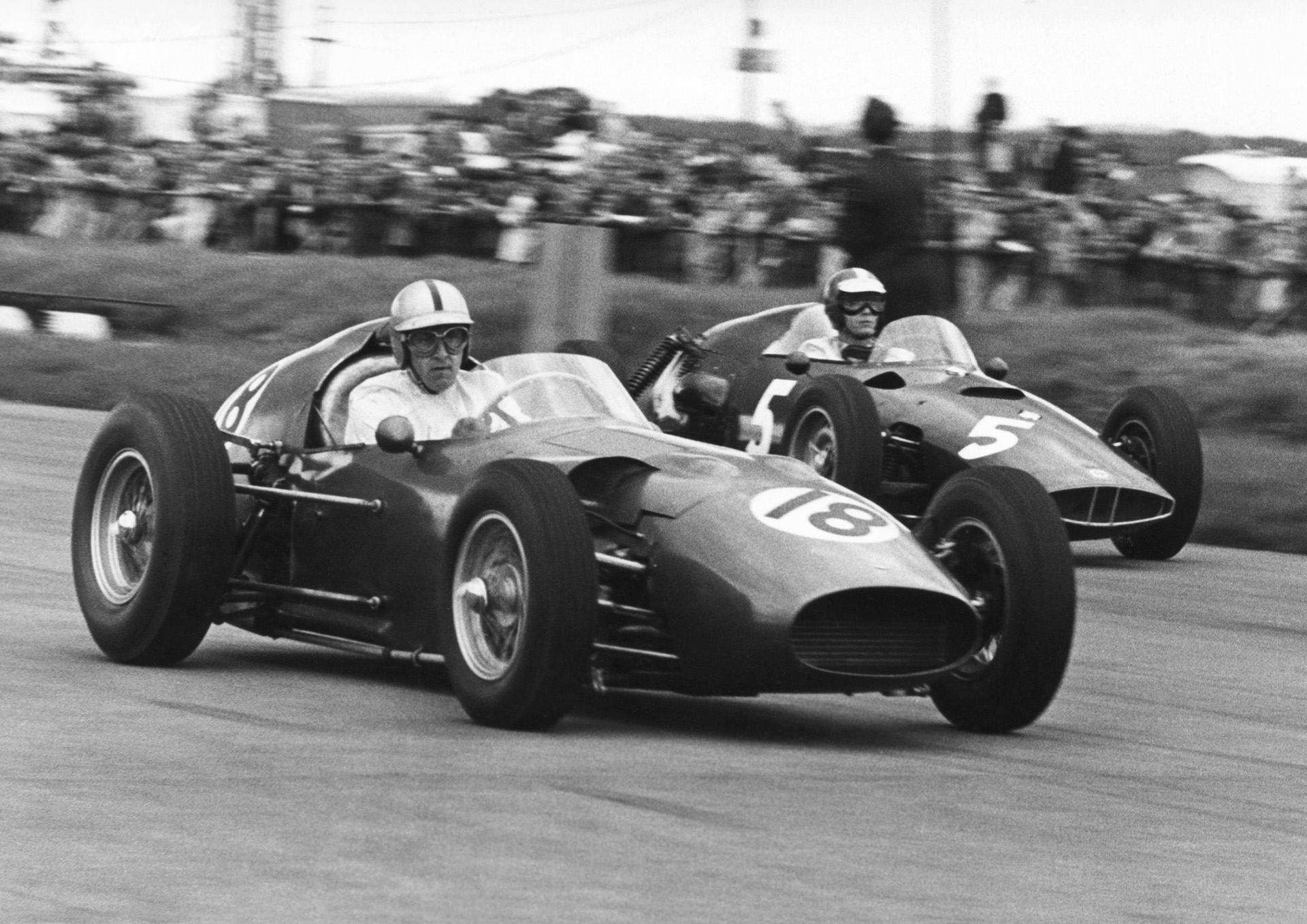

Aston Martin’s Formula 1 history isn’t particularly well known, mostly because the British carmaker withdrew from top-class single-seater racing in 1960, only to achieve tremendous success in sports car and endurance racing instead. When long-time motorsport partner Prodrive made several attempts at Formula 1 between 2006 and 2010, there was a chance the team could fly under Aston Martin’s flag, yet what ended up happening was a Red Bull Racing sponsorship from 2016, ended recently by the financial takeover of Lawrence Stroll, who will rebrand his Racing Point team to Aston Martin for 2021.
With the most recent race winner Sergio Perez getting replaced by Sebastian Vettel, and the Canadian billionaire’s son Lance Stroll staying right where he is, the Aston Martin name returns to Formula 1 in 2021 after having kept a fair distance for more than six decades. This gives us a great opportunity to look back at the brand’s single-seater history, highlighted by such names as Roy Salvadori and Carroll Shelby. Of course, let’s not forget about Count Louis Zborowski either, an avid racer at least as wealthy in the 1920s as Lawrence Stroll is probably today.

Aston Martin was founded by Lionel Martin and Robert Bamford in 1913 in a small London workshop, only to establish itself on the hillclimb courses of Great Britain. However, by the start of the speed-obsessed 1920s, Lionel Martin wished to move into Grand Prix racing as well, which is where the wealthy son of a Polish Count and an American heiress, Count Louis Zborowski, came in.
Founding Aston Martin’s earliest side-valve open-wheel racers by supplying the brand with around £10,000, Lionel Martin built two cars to compete in the 1922 Isle of Man TT. These two-seaters featured a 1,486cc engine producing 55 horsepower at 4,200 rpm, and by weighing just 1,653 pounds, they could achieve a top speed of 85 mph. The off-set second seat was reserved for the riding mechanic, who was essential for hand-pumping the fuel tank.
In 1922, both cars retired with engine problems, which only makes the 1.5-liter’s origin story more interesting. Here’s how Aston Martin remembers its development:
“Count Zborowski’s close friend and fellow racer, Clive Gallop, had an acquaintance with Peugeot engineer Marcel Gremillion. The talented Frenchman had been a pupil of the great engine designer Ernest Henry, now at Ballot. Gremillion persuaded Henry to let him have details of the 3.0-liter Ballot engine. Henry did no more than tear his drawings in half which Gremillion then adapted into the Bamford & Martin single cam, 16-valve, lower-half in return for what was described as a substantial bag of gold coins!”
“Thus, with a blueprint torn in two, the Henry-designed 3.0-litre became the Bamford & Martin single cam, 16-valve, 1.5,” Aston concluded.



Needless to say, these cars were also driven to the races on public roads. Unfortunately, Count Zborowski died during a race in 1924, and with his demise came an end to Aston Martin’s early Grand Prix ambitions.

Two decades later, it was successful stockbroker and MI5 veteran St. John Ratcliffe Stewart Horsfall who put Aston Martin back on the racing calendar. Nicknamed “Jock,” he acquired his first Aston Martin in 1934, at the age of 24. Following such adventures as being the driver in Operation Mincemeat—a successful deception of the Axis powers’ forces to disguise the Allied invasion of Sicily in 1943—Jock entered his 1936 Aston Martin 2.0-liter sports car in the 1946 Belgian Grand Prix.

The first post-war Belgian Grand Prix ended with Horsfall’s victory in front of the best of Frazer Nash, BMW and Alvis. Aston Martin’s 2.0 four-cylinder produced 125 horsepower, while the car weighed around 1,763 pounds.
Sir David Brown acquired Aston Martin in 1947, while two years later, Horsfall took second in class and fourth overall in the 1949 Spa 24-hour race as a privateer at the wheel of an Aston Martin Speed. What’s more, Jock chose to drive the car for the entire 24 hours single-handed. He died a little over a month later in a racing incident at the 1949 BRDC Trophy held at Silverstone.
Running as Aston Martin Lagonda by 1950, Sir David’s company had the ambition to create cars that could do well both in the World Sportscar Championship and the brand new Formula 1 World Championship. After the DB3S race cars’ second-place finishes, the DBR1 won at Le Mans, while single-seaters like the DP155 spawned a number of evolutionary models for F1. For both the road and track, David Brown’s team also started working on the DB4, a car built on a tubular chassis with a new DOHC straight-six engine by Tadek Marek.



In early 1957, Aston Martin began testing its DBR4. This was a spaceframe single-seater weighing just 1,267 pounds while packing a 2,493cc, dry sump, six-cylinder engine tuned to 256 horsepower. However, Aston Martin’s new race car only made its competition debut in 1959, at a BRDC International Trophy event run under Formula 1 rules at Silverstone.
Aston Martin’s car No. 1 was driven by 24 Hours of Le Mans-winner Roy Salvadori, who finished second behind Jack Brabham in a Cooper-Climax T51. The second DBR4/250 was driven by Carroll Shelby, yet the front-engined Astons were not ready for the pace of the new mid-engined competition. Once Aston Martin followed up with the lighter, yet similarly disappointing DBR5, Sir David Brown decided to withdraw from single-seater motorsport and focus on endurance racing past the 1960 season.
Carroll Shelby drove both Aston Martin’s DBR3, the DBR1 and DBR4 before jumping into Maserati Birdcages by the end of 1959, then setting up the Shelby School of High Performance Driving with Pete Brock two years later.




In 2021, the new Aston Martin F1 Team will have four-time Formula 1 champion Sebastian Vettel, and son of company chief Lance Stroll to do better than Roy Salvadori and Carroll Shelby could some 60 years ago.
Got a tip about the future of Sergio Perez, or the 2021 Aston Martin Valkyrie? Send us a note: tips@thedrive.com